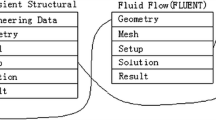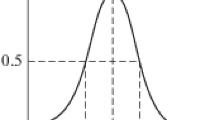Abstract
Acoustic characteristics of a thrust chamber with quarter-wave resonators are numerically studied based on the unsteady Reynolds-averaged Navier-Stokes (URANS) method. Organized pressure disturbance model and constant-volume bomb model are applied as artificial disturbances to excite pressure oscillations in the chamber. Eigenfrequencies and amplitudes of acoustic modes of the chamber are obtained by fast fourier transform (FFT) analysis, while damping characteristics are evaluated by the half-power bandwidth method. Predicted damping capacities of the chamber with and without quarter-wave resonators agree well with experimental results. Pressure oscillations can be controlled by a quarter-wave resonator mainly through reducing the amplitude of target acoustic mode, rather than increasing damping capacity of the chamber. Major damping mechanism of the resonator is cutting down pressure peak of target acoustic mode and raising up its pressure trough (CPRT); therefore the amplitude of target acoustic mode is reduced significantly. Moreover, acoustic energy can be dissipated by vortex at the orifice and by viscosity on the surface of a resonator, which increase damping capacity of the chamber slightly. Under the condition with multi-modes pressure oscillations, a resonator can still suppress pressure oscillations of target acoustic mode through CPRT. However, it may enhance pressure oscillations of other modes due to redistribution of oscillation energy among all acoustic modes.
Similar content being viewed by others
References
Harrje D, Reardon F. Liquid propellant rocket combustion instability. Technical Report. Washington DC: Scientific and Technical Information Office, NASA SP194, 1972
Yang V, Anderson W E. Liquid Rocket Engine Combustion Instability. Reston: American Institute of Aeronautics & Astronautics, 1995. 380–385
Frezzotti M L, Nasuti F, Huang C, et al. Quasi-1D modeling of heat release for the study of longitudinal combustion instability. Aerosp Sci Tech, 2018, 75: 261–270
Kim H J, Seo S, Lee K J, et al. Stability rating tests for the length-optimization of baffles in a liquid propellant combustion chamber using a pulse gun. Aerosp Sci Tech, 2008, 12: 214–222
Feng S J, Nie W S, He B, et al. Control effects of baffle on combustion instability in a LOX/GH2 rocket engine. J Spacecraft Rockets, 2010, 47: 419–426
Park J H, Sohn C H. On optimal design of half-wave resonators for acoustic damping in an enclosure. J Sound Vib, 2009, 319: 807–821
Sohn C H, Park I S, Kim S K, et al. Acoustic tuning of gas-liquid scheme injectors for acoustic damping in a combustion chamber of a liquid rocket engine. J Sound Vib, 2007, 304: 793–810
Park I S, Sohn C H. Nonlinear acoustic damping induced by a half-wave resonator in an acoustic chamber. Aerosp Sci Tech, 2010, 14: 442–450
Kim H J, Cha J P, Song J K, et al. Geometric and number effect on damping capacity of Helmholtz resonators in a model chamber. J Sound Vib, 2010, 329: 3266–3279
Cora R, Martins C A, Lacava P T. Acoustic instabilities control using Helmholtz resonators. Appl Acoust, 2014, 77: 1–10
Oschwald M, Farago Z, Searby G, et al. Resonance frequencies and damping of a combustor acoustically coupled to an absorber. J Propuls Power, 2008, 24: 524–533
Jo S, Choi Y, Kim H J. Evaluation of the damping capacity according to the geometric and the number of resonator with thermal environment using a Rijke tube. Aerosp Sci Tech, 2019, 88: 1–8
Zhou X Q, Yu D Y. Acoustic energy absorption and dissipation characteristic of Helmholtz resonator enhanced and broadened by acoustic black hole. Aerosp Sci Tech, 2018, 81: 237–248
Searby G, Habiballah M, Nicole A, et al. Prediction of the efficiency of acoustic damping cavities. J Propuls Power, 2008, 24: 516–523
Kim S K, Choi H S, Kim H J, et al. Finite element analysis for acoustic characteristics of combustion stabilization devices. Aerosp Sci Tech, 2015, 42: 229–240
Zhao H, Lu Z L, Guan Y H, et al. Effect of extended necks on transmission loss performances of Helmholtz resonators in presence of a grazing flow. Aerosp Sci Tech, 2018, 77: 228–234
Wu G, Lu Z L, Xu X, et al. Numerical investigation of aeroacoustics damping performance of a Helmholtz resonator: Effects of geometry, grazing and bias flow. Aerosp Sci Tech, 2019, 86: 191–203
Frendi A, Nesman T, Canabal F. Control of combustion-instabilities through various passive devices. In: 11th AIAA/CEAS Aeroacoutics Conference. Monterey, 2005. 2005–2832
Zhang Z G, Zhao D, Han N M, et al. Control of combustion instability with a tunable Helmholtz resonator. Aerosp Sci Tech, 2015, 41: 55–62
Shimizu T, Hori D, Kitamura K, et al. Slit resonator design and damping estimation in linear and non-linear ranges. In: 41st AIAA Fluid Dynamics Conference and Exhibit. Honolulu, 2011. 2011–3261
Tam C K W, Ju H, Jones M G, et al. A computational and experimental study of slit resonators. J Sound Vib, 2005, 284: 947–984
Tam C K W, Ju H, Jones M G, et al. A computational and experimental study of resonators in three dimensions. J Sound Vib, 2010, 329: 5164–5193
Sohn C H, Park J H. A comparative study on acoustic damping induced by half-wave, quarter-wave, and Helmholtz resonators. Aerosp Sci Tech, 2011, 15: 606–614
Zhang H Q, Ga Y J, Wang B, et al. Analysis of combustion instability via constant volume combustion in a LOX/RP-1 bipropellant liquid rocket engine. Sci China Tech Sci, 2012, 55: 1066–1077
Anderson J D. Computational Fluid Dynamics. Wu S P, Liu Z M, translated. Beijing: China Machine Press, 2009. 174–181
Qin J X, Zhang H Q, Wang B. Numerical evaluation of acoustic characteristics and their damping of a thrust chamber using a constant-volume bomb model. Chin J Aeronaut, 2018, 31: 470–480
Qin J X, Zhang H Q, Wang B. Investigation on acoustic characteristic of thruster with numerical constant-volume bomb method (in Chinese). J Propuls Technol, 2018, 39: 366–273
Habiballah M, Lourme D, Pit F. PHEDRE—Numerical model for combustion stability studies applied to the Ariane Viking engine. J Propuls Power, 1991, 7: 322–329
Grenda J M, Venkateswaran S, Merkle C L. Multi-dimensional analysis of combustion instabilities in liquid rocket motors. In: 28th AIAA/ASME/SAE/ASEE Joint Propulsion Conference and Exhibit. Nashville, 1992. 1992–3764
Urbano A, Selle L, Staffelbach G, et al. Exploration of combustion instability triggering using large eddy simulation of a multiple injector liquid rocket engine. Combust Flame, 2016, 169: 129–140
Zhuang F C, Nie W S, Zhao W T, et al. Liquid rocket combustion instability analysis methodology-methods and representative examples. In: 34th AIAA/ASME/SAE/ASEE Joint Propulsion Conference and Exhibit. Cleveland, 1998. 1998–3690
International Organization for Standardization. Acoustic—Determination of sound absorption coefficient and impedance in impedance tubes—Part 1: Method using standing wave ratio (ISO 10534-1: 1996). Switzerland: ISO, 1996
International Organization for Standardization. Acoustic—Determination of sound absorption coefficient and impedance in impedance tubes—Part 2: Transfer-function method (ISO 10534-2:1998). Switzerland: ISO, 1998
Buffum F G, Dehority G L, Slates R O, et al. Acoustic attenuation experiments on subscale, cold-flow rocket motors. AIAA J, 1967, 5: 272–280
Christensen E, Nesman T. Fastrac rocket engine combustion chamber acoustic cavities. In: The 10th Annual Symposium of the Penn State University Propulsion Engineering Research Center, 1998. 18–23
Author information
Authors and Affiliations
Corresponding author
Additional information
This work was supported by the National Natural Science Foundation of China (Grant No. 91841303).
Rights and permissions
About this article
Cite this article
Qin, J., Zhou, L., Zhang, H. et al. Numerical evaluation of acoustic characteristics of a thrust chamber with quarter-wave resonators. Sci. China Technol. Sci. 64, 375–386 (2021). https://doi.org/10.1007/s11431-019-1575-6
Received:
Accepted:
Published:
Issue Date:
DOI: https://doi.org/10.1007/s11431-019-1575-6




